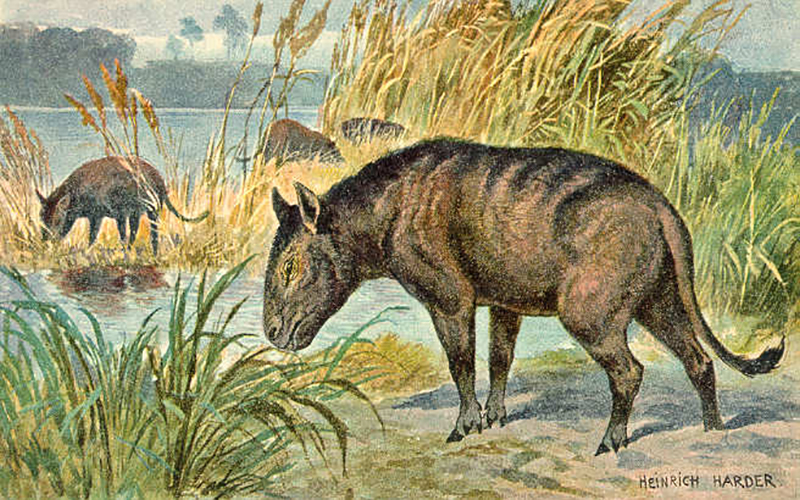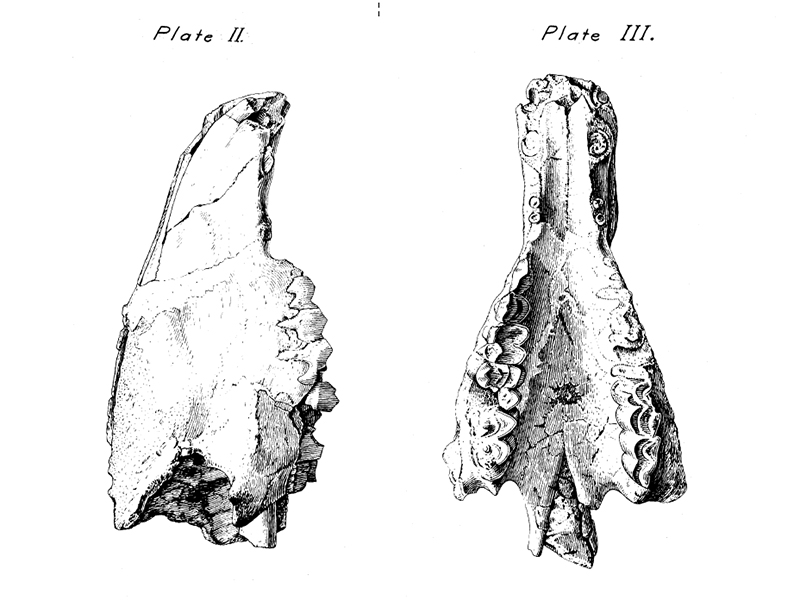|
|

Oreodonts of the Tick Canyon Formation.
PaleoBios: Contributions from the University of California Museum of Paleontology, Berkeley. No. 1: June 15, 1967
|
Abstract. In 1940, Richard H. Jahns reviewed the stratigraphy of the nonmarine Mint Canyon Formation in the eastern part of the Ventura Basin and separated from it a new formation and fauna. Previous to this work, a controversy existed as to the age of the Mint Canyon Formation, for it contained vertebrates considered indicative of both the Miocene and Pliocene (Kew, 1924, Maxson, 1930, and Stirton, 1933). As a partial solution to this controversy, Jahns demonstrated the presence of an erosional unconformity low in the nonmarine sequence which indicated a shift in source area. He redefined the beds below the unconformity as the Tick Canyon Formation (Jahns, 1940, pp. 163-66). The composite Tick Canyon fauna as presently known is as follows: a heteromyid rodent, Trogomys rupinimenthae Reeder, 1960, a rabbit, Archaeolagus acaricolus Dawson, 1958, two oreodonts, Merychyus (Merychyus) calaminthus Jahns, 1940, and Merychyus (Merychyus) jahnsi (this paper), a camel, Miolabis californicus Maxson, 1930, and a stenomyline camel (previously unpublished record). All California Institute of Technology collections are now conserved in the Los Angeles County Museum of Natural History. With the consent of this institution, the author was able to study the entire sample of oreodonts from the Tick Canyon fauna, which includes an additional maxillary fragment collected by Miss Beth Chasse, an associate of the museum.
Download pdf here. Courtesy of Stan Walker.
|
SEE ALSO:
Tick Canyon Camel (Maxson 1928)
Sand Canyon Whale
Castaic Bison (1950)
Canyon Country Oreodonts (Whistler 1967)
Newhall Ranch Bivalve
Sand Canyon Marine Fossils x3
Fish Canyon Scallops
Pico Formation 2011 (Squires 2012)
Marine Fossils, Newhall Creek x7
Pico Canyon x2
Marine Fossils,
Towsley Canyon x12
|
The site owner makes no assertions as to ownership of any original copyrights to digitized images. However, these images are intended for Personal or Research use only. Any other kind of use, including but not limited to commercial or scholarly publication in any medium or format, public exhibition, or use online or in a web site, may be subject to additional restrictions including but not limited to the copyrights held by parties other than the site owner. USERS ARE SOLELY RESPONSIBLE for determining the existence of such rights and for obtaining any permissions and/or paying associated fees necessary for the proposed use.












